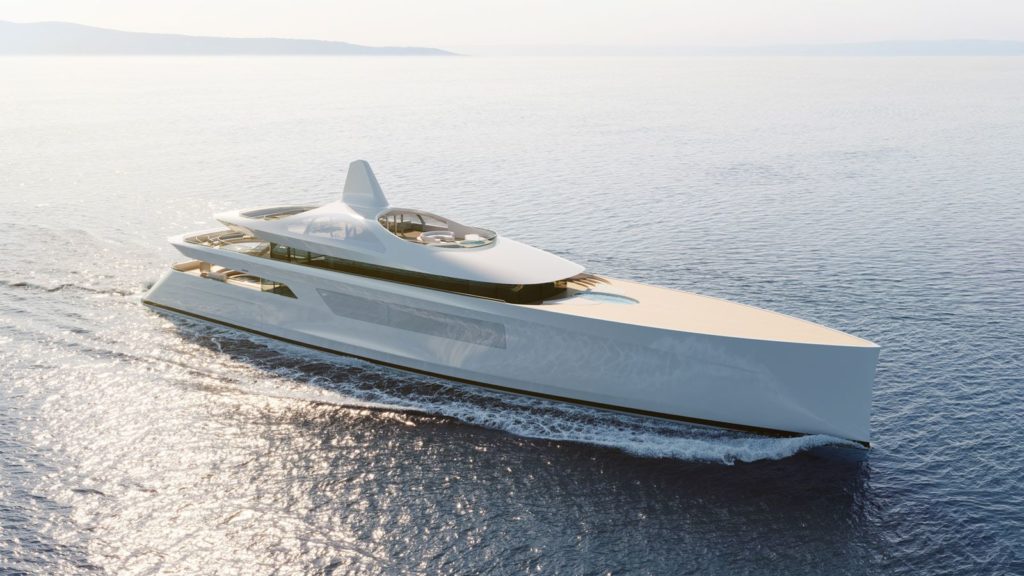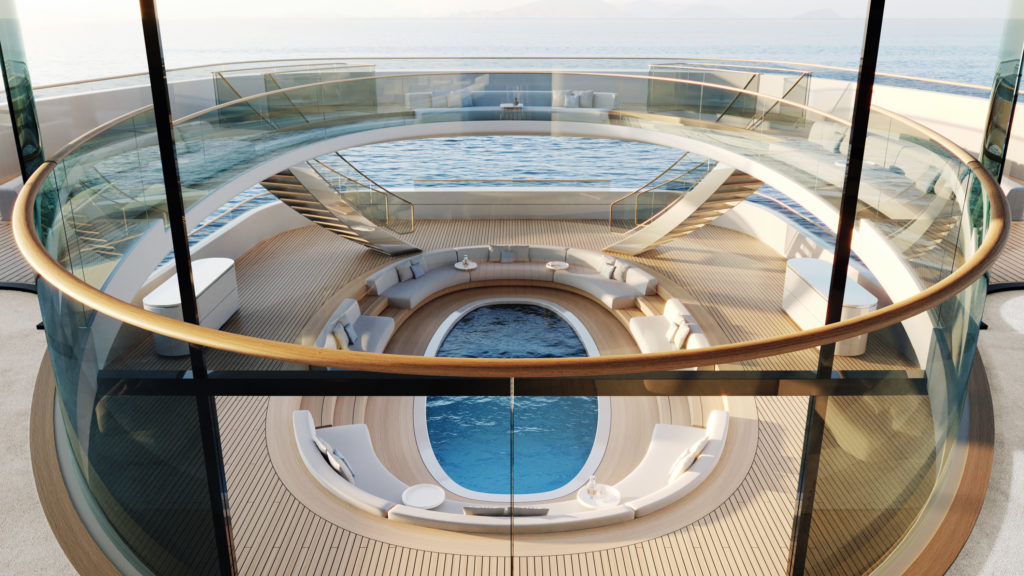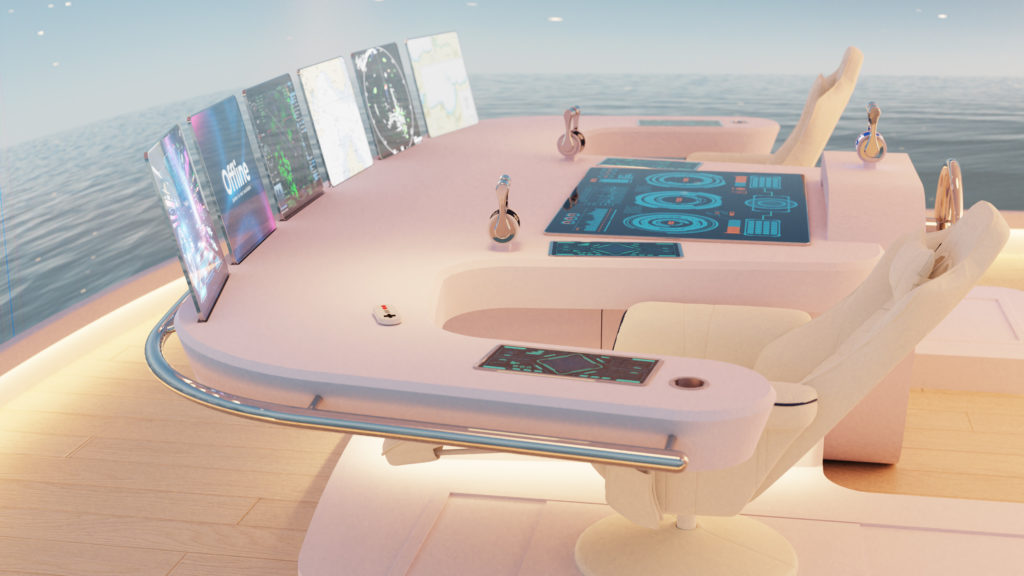With the world of yacht design becoming more advanced and revolutionary day by day, and an influx in owners who want to push boundaries for the newest, most imaginative yachts on the market, designers and developers are having to go far beyond the traditional tweaks to window shapes and sizes and the arrangement of space on board, and instead are forced to consider bold, forward-thinking designs that will get everyone talking. These yachts are designed to inspire the next generation of yacht owners, and a room theme running through these yachts is the focus on sustainable, responsible yachting, increasing efficiency while reducing traditional fuel consumption.
This article looks at some creative examples of new Superyacht design.
Kairos
Described as a “floating, living island”, 295-foot Kairos was officially launched by Oceanco at the Monaco Yacht Show in September. Kairos combined asymmetric shapes, transparent structures and few physical barriers, and its shape means that there is no obvious bow, so she can move in opposite directions. As well as most of the yachts in this article, sustainability is also at the forefront of Karios’ design, with an all-electric propulsion in its diesel-hybrid configuration that also produces less noise, fewer vibrations and no local emissions. She also uses batteries as a primary source of energy.
A stand out feature on this yacht is the vast piazza that covers three levels which is described as breaking “from the canons of conventional yacht design”. To expand the living space for guests, the guest and owner accommodation was placed in the lower deck.
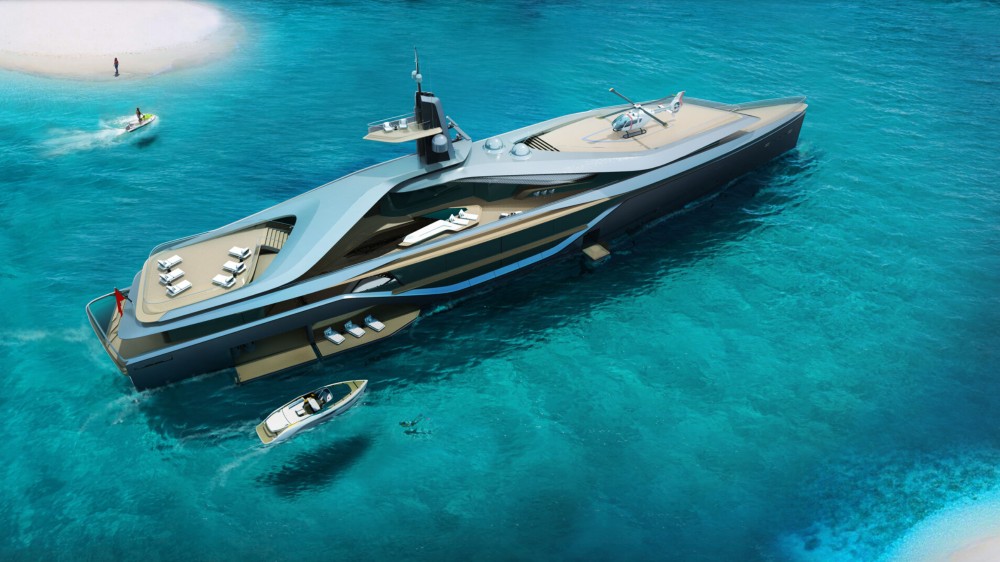
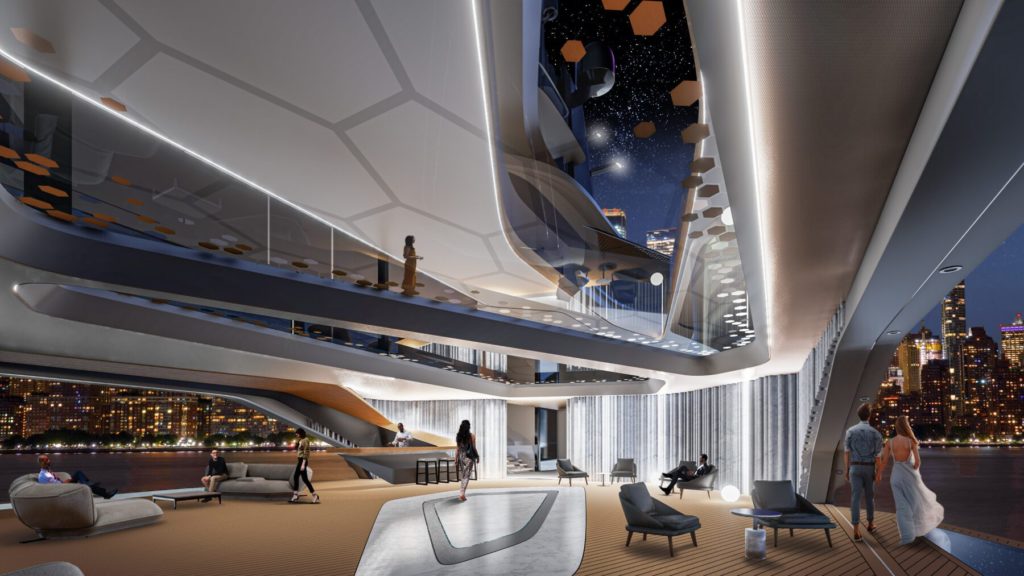
Seataci
This yacht looks to mimic a whale with two submerged pods that create waves to push the yacht forward, as well as a tail-like aft section that adds to the stability of the design. The idea revolves around providing guests with an underwater experience, as the main hull lowers underwater to offer a view of marine life from the large panoramic windows around the sides of the vessel. The designers also wanted to ensure Seataci remained a luxury yacht, creating as little noise as possible and giving guests the ability to sail in shallow water, without having a negative impact on the marine environment.
On the main deck you will find a tropical garden enclosing a swimming pool next to landing pads for personal drone. The idea of using drones was added to the concept with the vision of guests flying ashore to explore, when personal drones become widely available and safe to use.
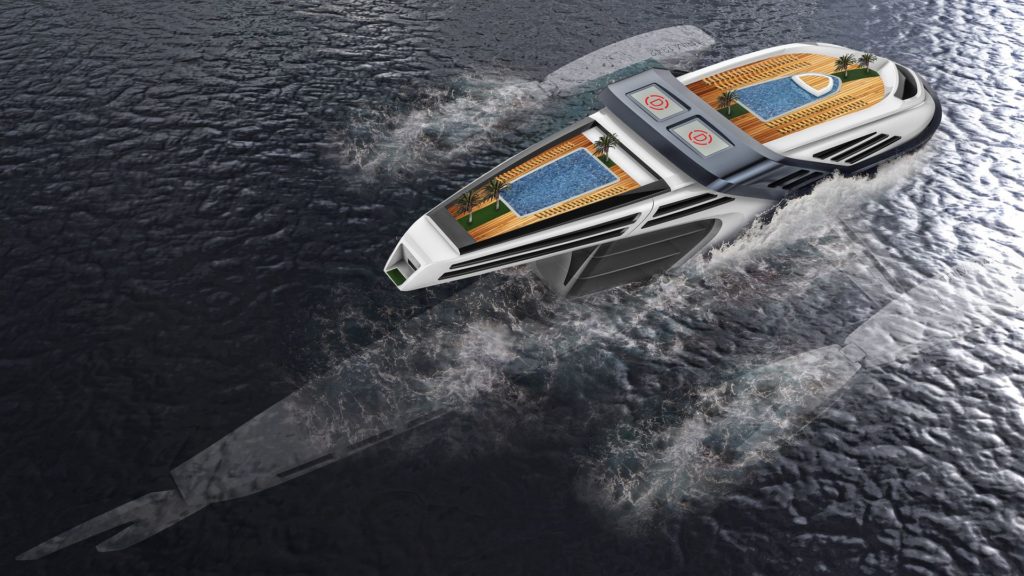
Earth 300
At an impressive 300 metres in length, Earth 300 is nuclear-powered, all about green technology. The stand out features on this yacht include the science sphere to aft, the 22 laboratories and her capacity to accommodate more than 400 people.
Earth 300 was designed to be a traveling laboratory for exploration scientists. “We want to build a global icon for science, designed as a scientific sculpture on the seas, to capture people’s attention and inspire their imagination,” says Aaron Olivera, the CEO of Earth 300. The company hopes the superyacht will be ready to set sail in 2025.
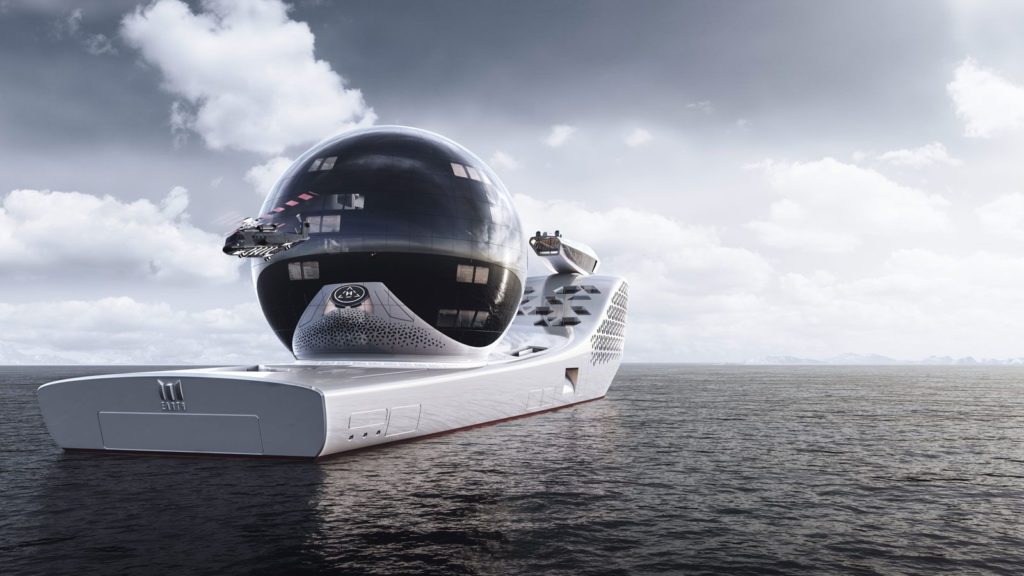
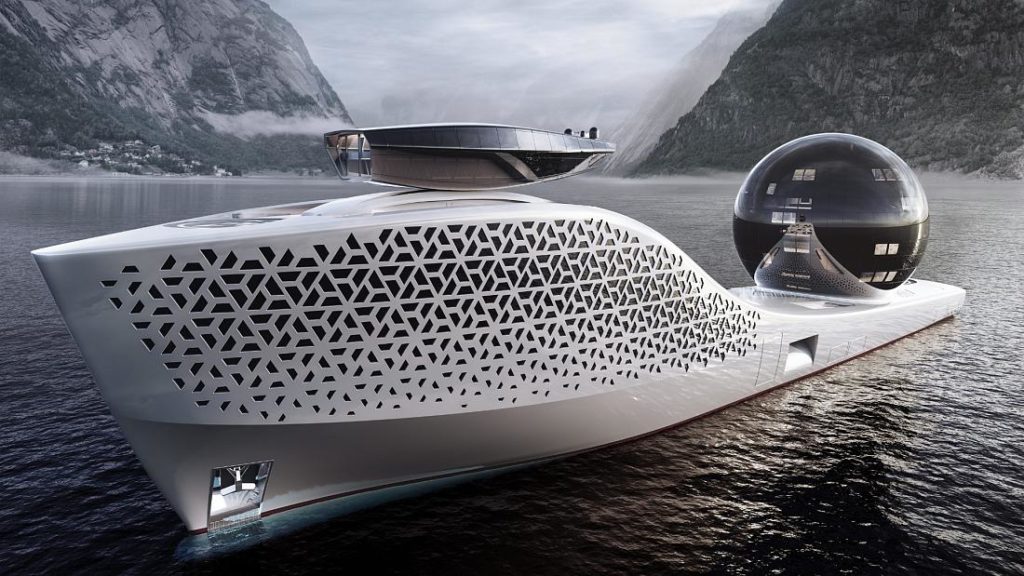
Project Galileo 2
Considered the largest catamaran in the world, this concept was designed to go way beyond what is feasible in the world of Superyacht design. Key features on this vessel include the fold-down restaurant and harbour area with an 80 metre pier and a functioning marina with cranes and lifts. The storage space on this yacht is magnificent, something of which is important to yacht owners. She can store up to 25 tenders, submersibles and toys and boasts an outdoor cinema, hospital and 500 square meter swimming pool. Beiderbeck Designs have thrown the design book out of the window with this yacht and have created a visionary yacht.
Again, also championing sustainability in yachting, Project Galileo 2 uses methanol propulsion systems and the design team proposes to pioneer geothermal technology.
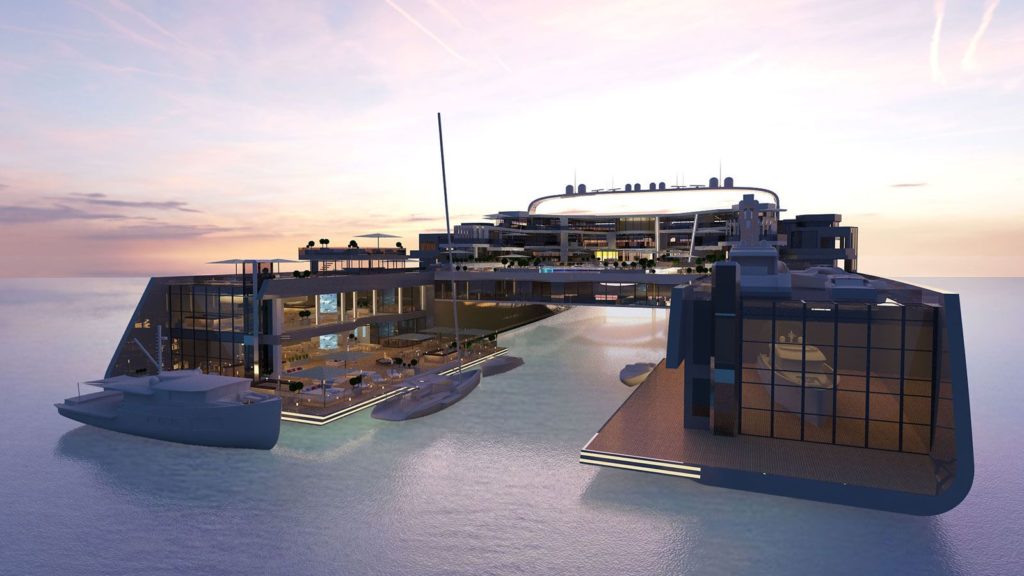
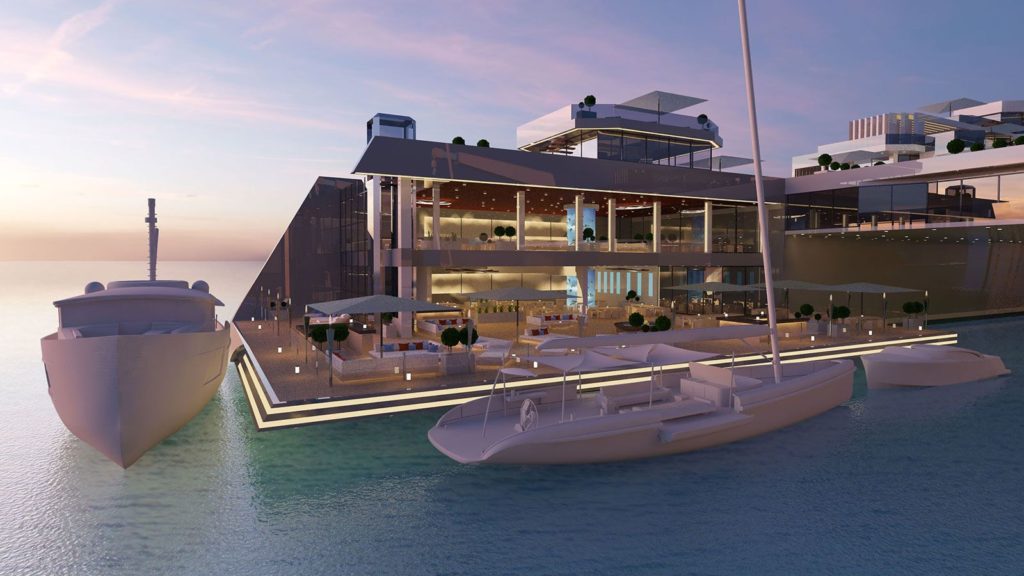
Pagurus
Crab-shaped Pagurus is a 25 metre solar-powered catamaran that was originally designed to be a military vessel. She is designed to be able to move across a range of terrain including mud and sand using her screw cylinders that line the hulls. Who on land, the cylinders lower to the ground, turning the yacht into an amphibious vehicle. While underway the cylinders recharge the yacht batteries with the help of water friction, and the solar panels provide full electric sailing with a range of six to seven hours at five knots.
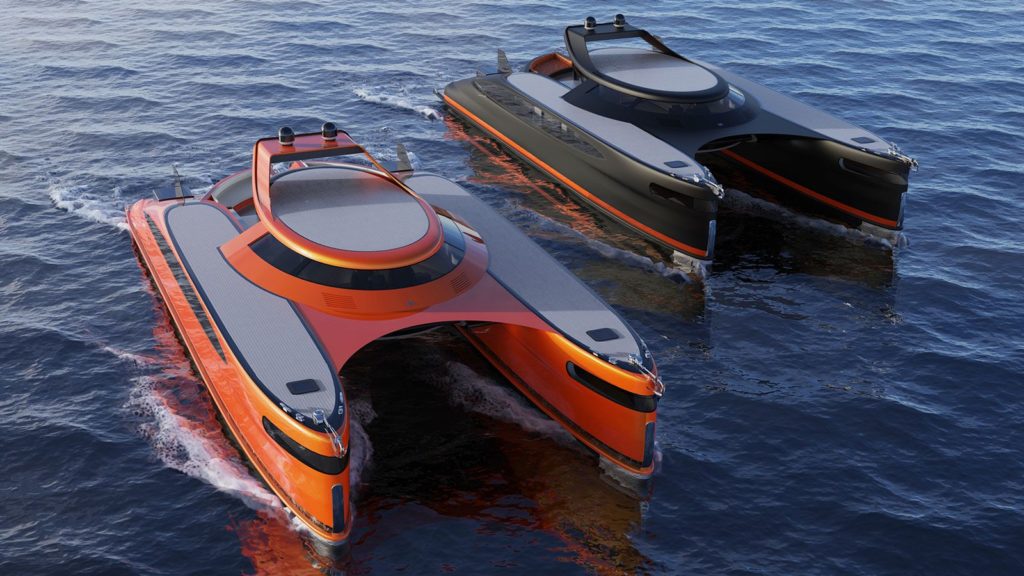
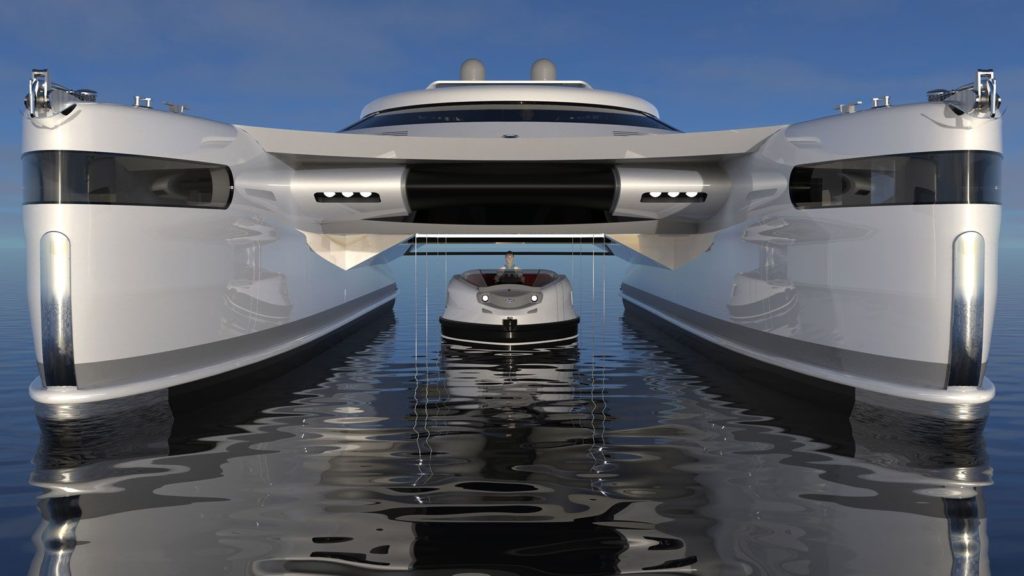
Pure by Feadship
Feadship unveiled the 81.75 metre Pure at the Monaco Yacht Show. Replacing the traditional bridge, Pure places the pilothouse below decks and uses augmented-reality visualisation that connects with radar, AIS, maps, depth sounders and cameras meaning the captain can see everything virtually with all the important navigation information to hand. This arrangement has never been used on a Superyacht before but is used on vessels such as submarines.
Pure is also host to a triple-deck elliptical glass atrium, retractable glass-bottomed Jacuzzi amidships, and a large beach club with three fold-down balconies aft and on both sides. The glass atrium provides a clear line of sight across three of the five decks on Pure.
This yacht was designed with flexible “energy-hybrid” propulsion that would evolve over time. From diesel electric in 2024, to hydrogen in 2027, to all-methanol fuel cells in 2030, the concept is designed to respond to advancing technology, depending on which sustainable fuels become most viable.
